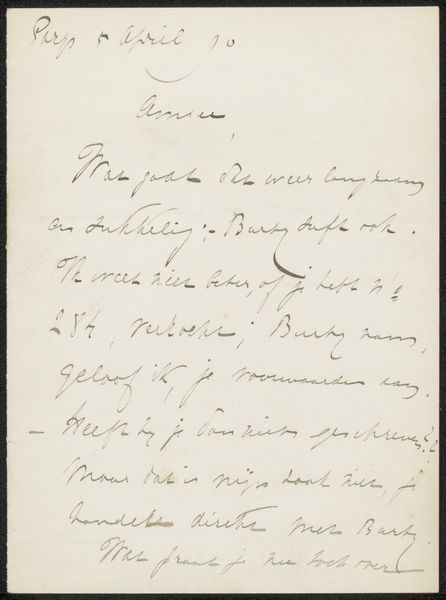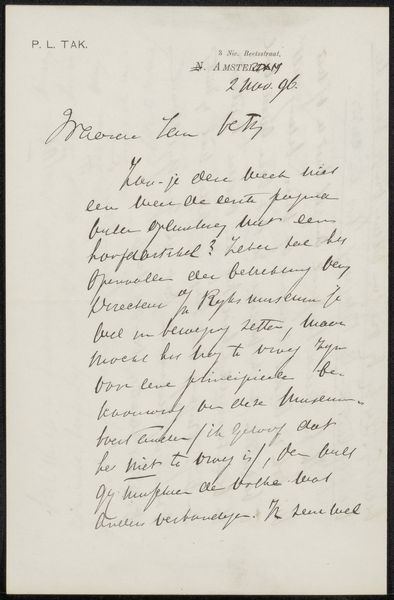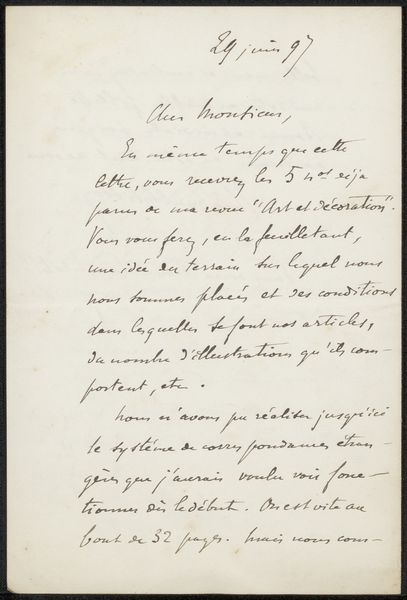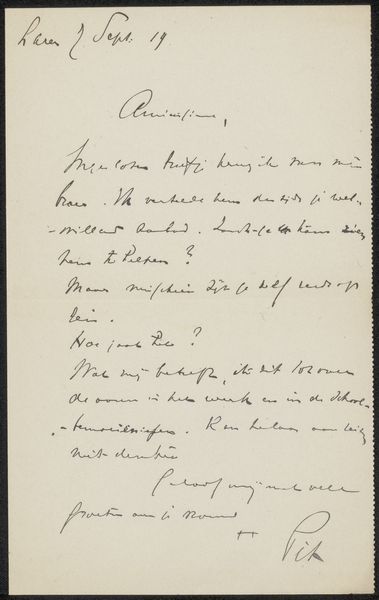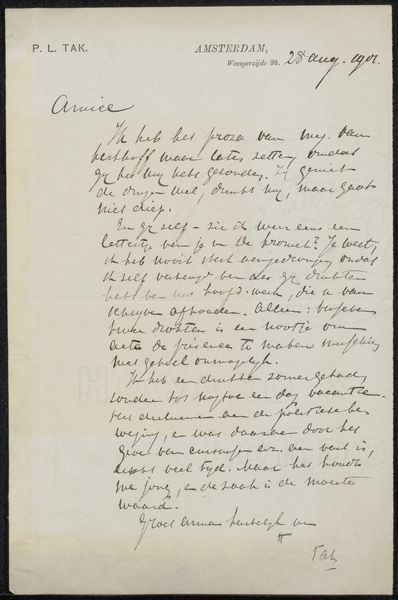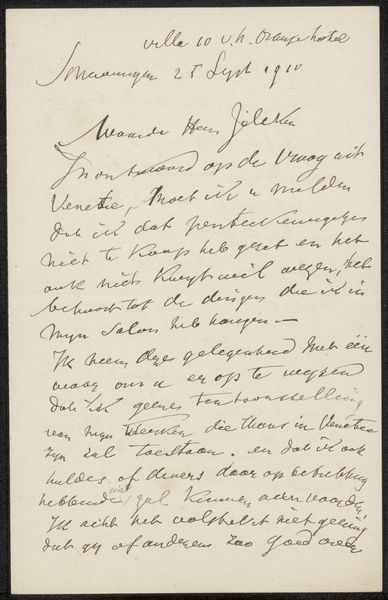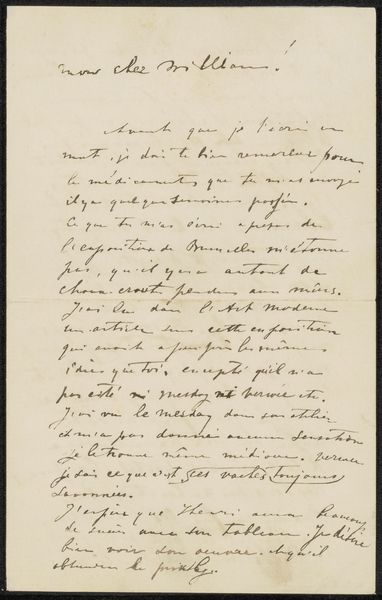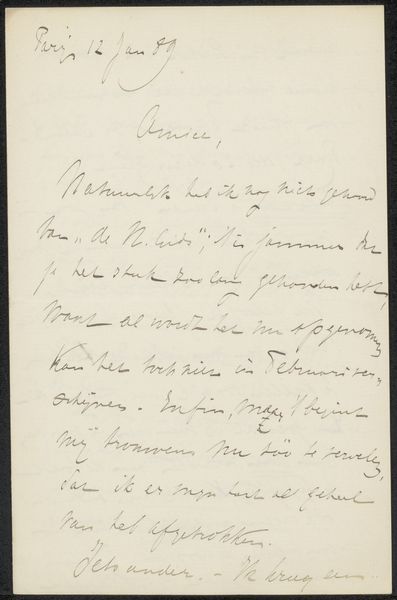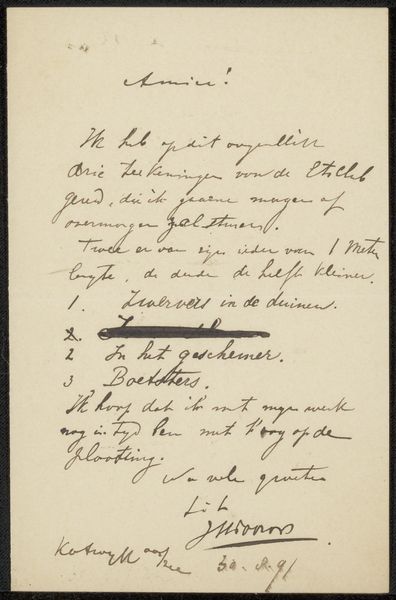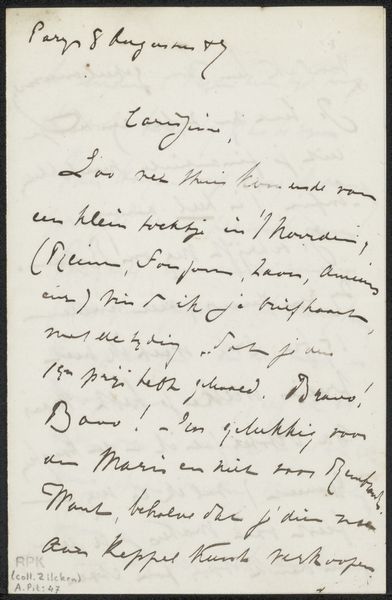
drawing, paper, ink
#
drawing
#
ink paper printed
#
paper
#
ink
Copyright: Rijks Museum: Open Domain
Curator: Here we have a drawing titled "Brief aan Jan Veth," possibly created in 1898 by Pieter Lodewijk Tak, utilizing ink on paper. Editor: It immediately evokes a sense of intimacy and a direct connection, perhaps an unfiltered moment captured through handwriting. The pale paper further suggests the work's age and history. Curator: Absolutely. Given the period and Tak’s associations, it's important to consider this letter within the context of the burgeoning socialist movements and the development of a distinct Dutch cultural identity. Tak was, after all, an important figure in Dutch cultural life as an editor and critic and an ardent promoter of socialist ideals. Editor: So the choice of a personal letter as a medium might be read as a conscious move towards a more democratic or egalitarian form of communication? A reaction, perhaps, against the established high art of the time? Curator: Precisely! We also have to consider the social status and artistic sensibilities of Jan Veth himself. The letter highlights an interaction within a very specific artistic and political circle, reflecting the complex relationships between artists, critics, and their shared ideologies. Editor: And the act of handwriting itself conveys an urgency, a raw and direct expression. One could ask: What kind of dialogue were they trying to spark? What sort of shared project are they discussing? This could have significant bearing on our appreciation of their works. Curator: This really exemplifies how considering both the art object and its wider socio-political and historical implications adds so much value for our audience. Editor: Agreed. We can now engage more meaningfully with the past and relate its lessons to contemporary struggles for equity.
Comments
No comments
Be the first to comment and join the conversation on the ultimate creative platform.
